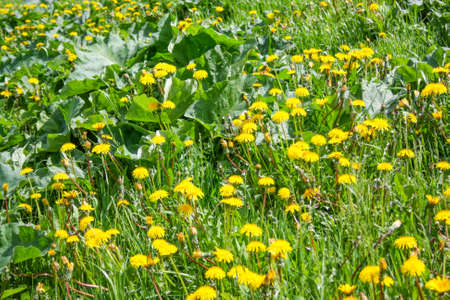Understanding Naturalising: The British Perspective
When we talk about naturalising spring bulbs in lawns and meadows here in the UK, were not just planting for a season—we’re taking part in a cherished tradition that connects us to the landscape and the passing of time. To naturalise, in the British sense, means to allow bulbs like daffodils, crocuses, snowdrops, and bluebells to grow and multiply as they would in the wild, weaving themselves into the very fabric of our gardens and green spaces. This approach is shaped by our temperate climate, distinct seasons, and longstanding love affair with informal, natural-looking gardens—a look epitomised by historic landscapes such as those found at Stourhead or Sissinghurst. Unlike formal beds or borders, naturalised bulbs create a gentle tapestry of colour that ebbs and flows with the rhythms of our weather and wildlife. It’s not about instant gratification but rather patience and an appreciation for subtle beauty as bulbs settle in over the years. In many ways, it reflects a peculiarly British way of gardening—respectful of nature, valuing heritage, and celebrating the quiet joys of spring’s return.
2. Choosing the Right Bulbs for British Lawns and Meadows
If you’re thinking about naturalising spring bulbs in your lawn or meadow, choosing varieties that thrive in our unique British climate is key. Over the years, many gardeners across the UK have favoured classic bulbs that not only return reliably each year but also blend effortlessly into wild settings, creating those charming drifts of colour we all love. Let’s take a closer look at some tried-and-true options—both native favourites and time-honoured heritage bulbs that have stood the test of time from Cornwall to the Highlands.
Classic Native Favourites
There’s something deeply satisfying about seeing our own native species flourishing right outside your door. Bluebells (Hyacinthoides non-scripta), for example, are an iconic sight in British woodlands and can be successfully established in lawns with dappled shade. Wild daffodils (Narcissus pseudonarcissus), once widespread across the countryside, lend a gentle touch of early spring gold. And let’s not forget snowdrops (Galanthus nivalis), which often brave the tail end of winter, heralding brighter days ahead.
Reliable Heritage Bulbs
Alongside natives, there’s a rich tradition of growing heritage bulbs that have become part of our gardening culture through generations. Crocus tommasinianus, known fondly as ‘Tommies’, naturalise beautifully and provide vital early nectar for bees. Fritillaria meleagris, or snake’s head fritillary, brings a touch of elegance with its chequered blooms—especially lovely in damper areas. For broader sweeps of colour, old-fashioned varieties like Narcissus ‘February Gold’ and Tulipa sylvestris add both resilience and charm to meadows large or small.
Summary Table: Top Bulbs for Naturalising in Britain
| Bulb Name | Type | Best Setting | Flowering Time | Special Notes |
|---|---|---|---|---|
| Bluebell (Hyacinthoides non-scripta) | Native | Semi-shade, woodland edges | Late April – May | Prefers moist soil; iconic in UK woods |
| Wild Daffodil (Narcissus pseudonarcissus) | Native | Lawn/meadow borders | March – April | Subtle yellow; ideal for natural drifts |
| Crocus tommasinianus (‘Tommies’) | Heritage | Lawn, light grassland | February – March | Tolerates mowing after flowering; bee-friendly |
| Snowdrop (Galanthus nivalis) | Native/Heritage | Lawn edges, under trees | January – February | Bests planted ‘in the green’ after flowering season |
| Snake’s Head Fritillary (Fritillaria meleagris) | Heritage/native in some regions | Damp meadows, riverbanks | April – May | Unique chequered flowers; loves moisture-retentive soils |
| Tulip sylvestris (Wild Tulip) | Heritage | Lawn/meadow with good drainage | April – May | Scented; prefers sun and well-drained soil |
| Narcissus ‘February Gold’ | Heritage cultivar | Lawn, borders, meadows | February – March | Earliness makes it a garden staple; robust performer year after year |
Selecting from these classics will give your lawn or meadow a distinctly British feel and ensure years of reliable spring displays. Remember, patience is key—naturalising takes time but rewards you with ever-increasing beauty as seasons pass.

3. Best Time and Conditions for Planting
If you’re keen to achieve a truly naturalised look in your garden, getting the timing right is absolutely vital. Here in Britain, our seasons can be famously unpredictable – one day it’s sunshine, the next it’s pouring with rain or there’s a nip of frost in the air. Traditionally, the best time to plant spring-flowering bulbs such as daffodils, crocuses, and snowdrops is from September through November, before the first hard frost sets in. This gives the bulbs plenty of time to establish roots before winter takes hold.
Understanding British Weather Patterns
It pays to keep an eye on local weather forecasts and avoid planting during periods of waterlogging or if the ground is rock-hard with cold. Damp but workable soil is perfect. In the north or higher elevations where frosts arrive earlier, aim to get your bulbs in by late September. Down south, you’ve got a little more leeway – but don’t leave it too late or you’ll risk poor establishment come spring.
Soil Matters Across Regions
Britain’s regional soils vary from heavy clays in the Midlands to sandy loams in East Anglia and chalky downs in the South. Bulbs generally dislike sitting wet all winter, so if you have heavy soil, consider adding grit or compost to improve drainage. If your patch is particularly stony or thin, opt for tough customers like wild daffodils (Narcissus pseudonarcissus) or English bluebells (Hyacinthoides non-scripta), both well-adapted to our native landscapes.
Weather Wisdom from Experience
One thing I’ve learnt over many seasons: don’t panic if autumn seems slow to arrive or if rain delays your plans. Bulbs are remarkably forgiving; just avoid forcing them into frozen earth. And remember – patience now will reward you with carpets of colour when spring finally breaks through those classic British grey skies.
4. Planting Techniques: Tried-and-True Methods
When it comes to naturalising spring bulbs in British lawns and meadows, wisdom handed down through generations becomes invaluable. The way bulbs are planted—considering spacing, depth, and pattern—makes all the difference between a thriving display and a patchy disappointment. Let’s delve into the time-honoured approaches that keep gardens looking splendid season after season.
Spacing: Giving Bulbs Room to Flourish
Proper spacing is crucial for healthy growth and natural-looking drifts. Crowding bulbs can lead to competition for nutrients and water, while too much space may look sparse. The following table offers classic guidance for some of Britain’s favourite spring bulbs:
| Bulb Type | Recommended Spacing (cm) | Depth (cm) |
|---|---|---|
| Daffodils (Narcissus) | 10–15 | 10–15 |
| Crocus | 7–10 | 5–8 |
| Snowdrops (Galanthus) | 7–10 | 5–7 |
| Bluebells (Hyacinthoides non-scripta) | 10–15 | 8–10 |
| Tulips* | 12–15 | 12–15 |
*Note: Tulips are less commonly naturalised but can be included in more formal meadow settings.
Planting Depth: A Golden Rule from Grandparents’ Gardens
The adage “twice as deep as the bulb is tall” still rings true. This helps anchor the bulb, protects it from frost and nibbling wildlife, and gives it the best chance of perennial return. Use a bulb planter or a sturdy trowel—just as your elders might have—to achieve consistent depth across your lawn or meadow.
Pattern Arrangements: Nature’s Own Touch
The most charming displays mimic how bulbs might scatter in the wild. Avoid planting in neat rows; instead, toss a handful of bulbs onto the grass and plant them where they fall. This age-old trick ensures a natural effect, creating drifts and clusters that blend seamlessly with existing turf. For larger meadows, consider overlapping swathes of different bulbs to prolong flowering and attract pollinators throughout spring.
Sustaining Lawns and Meadows Year After Year
The secret to long-term success lies in minimal soil disturbance when planting and allowing foliage to die back naturally after flowering. This practice feeds energy back into the bulb for next year’s display—a lesson passed down on many an allotment or country garden over the years.
5. Aftercare and Seasonal Lawn Management
Once your spring bulbs have settled into your lawn or meadow, the real skill lies in striking a balance between classic British lawn care and nurturing your newly naturalised treasures. It’s a bit like making a good cup of tea—timing, patience, and a gentle touch all play their part.
Mowing: Timing is Everything
A common misstep is reaching for the mower too soon after bulbs have flowered. In Britain, we’re used to neat lawns, but when it comes to naturalised bulbs, you’ll want to hold off on mowing until at least six weeks after the flowers have faded. This allows the foliage to die back naturally, feeding the bulbs for next year’s display. Resist the urge to tidy up too quickly—even if the grass looks a little wild for a while, it’s all part of the cycle.
Adapting Schedules to the Weather
Our unpredictable weather can be both a blessing and a challenge. A cold snap in April or an early heatwave can affect how quickly bulbs finish their cycle. If there’s a late frost or heavy rain, you may need to delay mowing even further. Keep an eye on the forecast and stay flexible with your plans—nature rarely sticks to our calendars.
Blending Bulb Care with Traditional Lawn Maintenance
For areas not planted with bulbs, maintain your regular mowing schedule—typically every one to two weeks during peak growing season. Where bulbs are present, mark out these patches if needed so you (or anyone helping with garden chores) remember to leave them undisturbed until the right time. Avoid using weed killers or high-nitrogen feeds around bulb areas as these can damage developing plants beneath the surface.
Dealing with Patchiness
After the bulb foliage dies down, you might notice some unevenness in your lawn. Don’t worry—over time, as bulbs multiply and self-seed, they’ll fill out these gaps naturally. You can overseed sparse patches with a traditional British lawn mix in late summer if you prefer a tidier look.
Nurturing bulbs alongside your lawn is a lesson in patience and observation—a true gardener’s approach. With a little care and flexibility, your British green space will reward you each spring with colourful drifts that become more spectacular year on year.
6. Wildlife and Ecological Benefits in the British Garden
If you’ve ever strolled through a British meadow in early spring, you’ll know it’s not just the human eye that’s drawn to those vibrant bursts of colour from naturalised bulbs. These modest blooms—be they daffodils, crocuses, or snowdrops—play a quietly heroic role in supporting our native wildlife, adding both beauty and life to our gardens.
For pollinators such as bees and butterflies, naturalised spring bulbs are nothing short of a lifeline. Early in the year, before many other flowers have woken up, bulbs provide essential nectar and pollen when food sources are scarce. Bumblebees, for example, often emerge on milder February days and will make a beeline for the nearest clump of crocus or snowdrop—vital fuel to kickstart their colonies.
But it’s not just about insects. Birds such as robins and blackbirds can benefit too. By encouraging a healthy insect population in your bulb-rich lawn or meadow, you’re ensuring these birds have plenty to feast on during the leaner months. Furthermore, the seed heads of some bulbs—like alliums—offer an extra treat for finches and sparrows come late summer.
Let’s not forget that naturalising bulbs also supports the broader garden ecosystem. As these plants multiply over the years, they help create a more varied tapestry of habitats at ground level. This diversity attracts everything from solitary bees burrowing among roots to hedgehogs snuffling for invertebrates beneath fallen foliage.
In essence, by weaving spring bulbs into your lawn or meadow, you’re reviving a traditional British gardening practice with real ecological value. The reward is more than just a cheerful splash of colour each year—it’s the gentle hum of bees, flitting butterflies, and bustling birdlife, all thriving because you chose to give nature a helping hand right outside your door.
7. Common Pitfalls and Lessons from Experience
When embarking on the journey of naturalising spring bulbs in British lawns and meadows, even the most enthusiastic gardener can encounter a few common hurdles. Over the years, seasoned gardeners up and down the country have learned valuable lessons—often the hard way! It’s worth reflecting on these shared experiences to save yourself time and heartache, while also cultivating patience and delight in your evolving garden.
Typical Mistakes Made by British Gardeners
One frequent misstep is planting bulbs too deeply or shallowly, which can either prevent them from flowering or leave them vulnerable to frost and wildlife. Another is overplanting—cramming bulbs too close together in excitement—which leads to overcrowding and poor displays in subsequent years. Choosing non-naturalising varieties, particularly those not suited for our unpredictable British weather, is another pitfall that often results in disappointing springs.
Resilient Solutions Passed Down Through Generations
The old hands will tell you: always check the recommended planting depth for each bulb type and use a dibber or trowel with depth markings. Give bulbs room to multiply over time by spacing them well apart; patience will be rewarded as they gradually form generous drifts. When selecting varieties, lean towards native or well-adapted species such as daffodils, crocuses, and snowdrops—these are tried-and-tested for our climate. And never underestimate the benefit of marking where you’ve planted; many a gardener has unwittingly mown down emerging shoots in early spring!
Enjoying the Process Year After Year
Perhaps the greatest lesson from experienced British gardeners is to cherish the gradual transformation rather than expecting instant perfection. The joy of seeing your first bulbs peep through after winter—and noticing how displays improve with each passing year—is what makes naturalising bulbs so rewarding. Take time to observe changes, share stories with neighbours over the fence, and remember that gardening, like life itself, is about learning from mistakes as much as celebrating successes. Embrace each season’s surprises and relish the evolving beauty that comes with perseverance.


